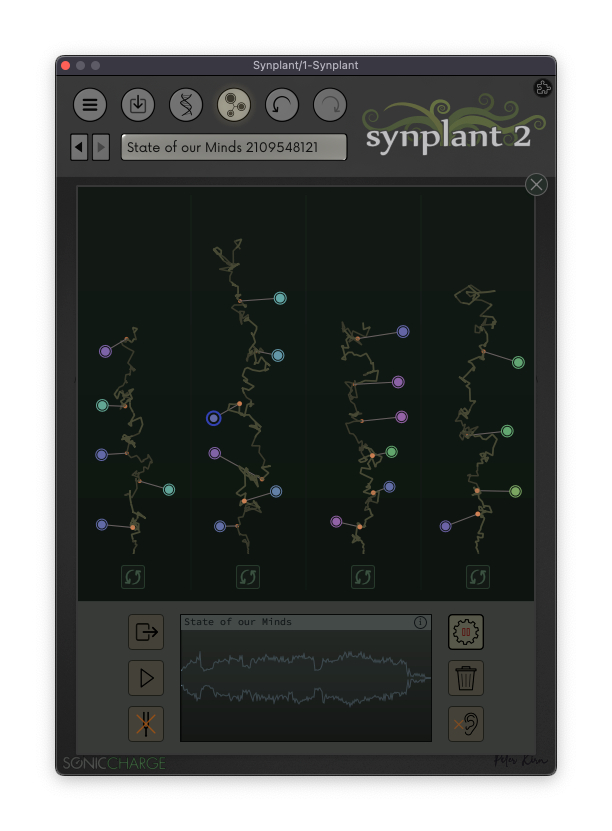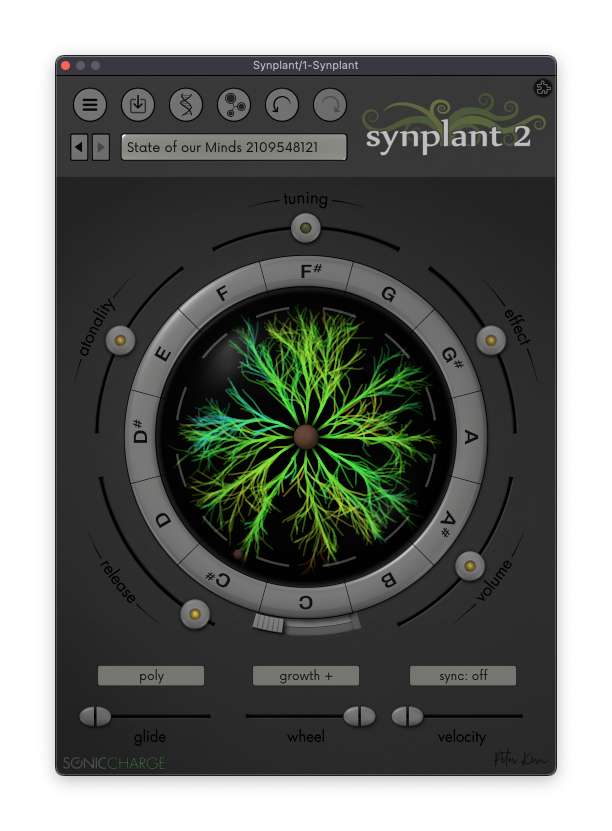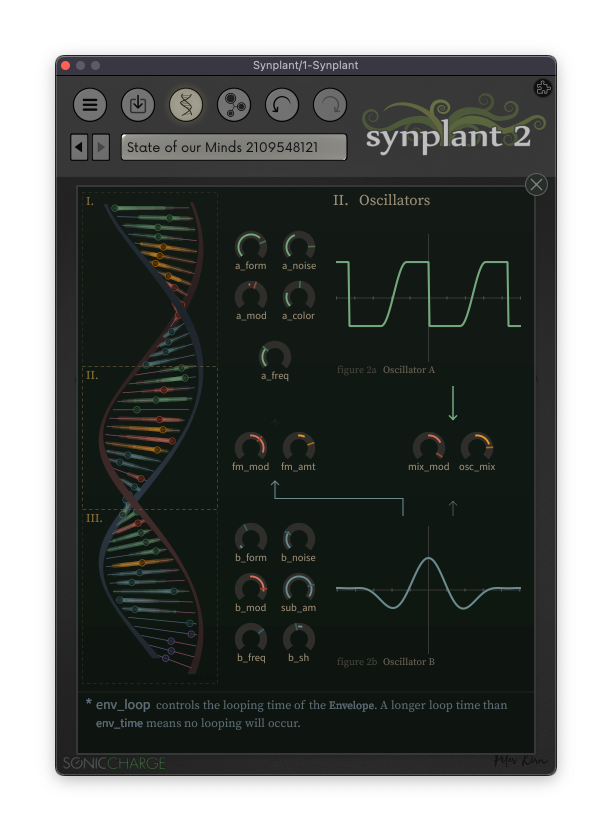Few instrument designs have ever come as close to science fiction as Synplant – and the alien breeding lab for sound has gotten more otherworldly in this update than ever. Replace those knobs with a double helix and start genetically engineering new paths from any sound you want to load. Here’s a first hands-on.
If you don’t know Synplant, the synth plug-in creation of Magnus Lindström and SonicCharge, get ready for something truly wild. If you do know Synplant, well I imagine you’re already excited, but strap in – the reengineered Synplant 2 is some next-level stuff.
And just … whoa. Dude.
As a quick review: Synplant’s original conceit was letting you spawn sounds by “growing” organic branches, mapping variants of sounds to a radial interface. Start with a “seed” at the hub, and each note can be stretched out into new sonic territory. It’s an idea that owes its lineage to the innovative work of Kai Krause and MetaCreations – they, too, had 3D-modeled UIs with branching structures for intuitively discovering “what-if” scenarios. (That whole history we should probably revisit at some point.) But while MetaCreations veteran Eric Wenger went on to start U&I Software and MetaSynth, there wasn’t a direct analog in synthesis to those genetically-branching graphical generators from Kai until Synplant. And shifting the generative paradigm from imagery to sound took an entirely new approach.
Synplant 2 wisely keeps the central UI, now with beautifully refined animations and look, but it’s immediate from the first sound that this is a new generation.

The banner feature in v2 is Genopatch, a machine learning-powered technology that spawns new patches from any sound you want to load. That’s a perfect match for the complex array of parameters inside the Synplant engine. But it’s great both when it works and when it glitches out – since surprises and unexpectedly mangled sounds are why you came to Synplant in the first place.
You can load anything into that file slot, too – even drop a track render, as I did in the video. This is, incidentally, a healthy use of machine learning that is not cloud-based AI stealing your sound programming chops or spying on you or something. It’s all locally-based, and frankly you don’t even have to care that it’s machine-learning based.
But there’s a lot more here – which is why Synplant lovers have been eagerly following this since Magnus started teasing it.

The audio engine is entirely rewritten – and has more parameters. Magnus tells us they’ve improved DSP algorithms for every part of the signal chain. Much as I loved the original Synplant, its sounds could eventually get grating. Synplant 2 is something else; it’s one you want to spend time with. And a single branch can become a genuinely useful preset, whether you’re doing something completely cinematic or leftfield or trying to find a unique bass or percussion sound.

New DNA editor. You can also dive a lot deeper into the sounds than before, with a more conventional view of all of the parameters generated by the primary UI. These are also animated with tons of visual feedback, so you don’t just get the sense that you’re getting a clinical, boring look under the hood – it’s nearly as playful as the main screen. And by the way, speaking of those parameters –
Genes are MIDI controllable and support automation. I haven’t even really gotten to dive into this yet, but you can assign MIDI CCs and automation to genes and perform morphing genetics live.
New performance features. Mono patches, glide/portamento, tempo sync (for any rhythmic component) – all make this more playable, not just a fun toy.
Assignable modulation wheel. You can specifically reassign the mod wheel to parameters like filter cutoff, LFO amount, and envelope time.
MPE support. Basic per-channel modulation, pitch bend, and pressure messages. I’m playing now with assigning this to Push 3 and Osmose, so… more on all these performance bits shortly.
Moddable and extensible. JavaScript, skins, and extensions, as previously introduced in Microtonic. There’s already a dark skin option alongside the primary download, which is what I’ve featured here.
I was curious about the DNA editor specifically – how it worked and what thinking was behind it. Here’s Magnus:
Well, the DNA in a Synplant seed is the set of parameters from which the branches semi-randomly morph. The “genes” are basically synth parameters, but they are designed and scaled to sound good with random changes. Originally in Synplant v1, I did not want an editor for the seed at all, since I did not want people to work with it as a conventional synth. Ultimately I gave in of course, but I made the editor a pretty difficult-to-use DNA spiral on purpose.
For Synplant 2, I felt that the power of Genopatch would be more obvious if you could more easily edit and understand the synth settings, so I added the knobs and graphs. But I did not want to lose the DNA spiral, thus I turned it into an “overview” of the entire set of genes. When you grow branches (e.g. with the mod wheel), colored lines will show how they move the settings in different directions.
Synplant 2 is available now (like, surprise – tonight!), for VST2, VST3, AUv2 on macOS and Windows.
There are straightforward installers for the synth, additional patches, and skins. SonicCharge has its own validation scheme, which works really elegantly and across all products. (You need a connection to authorize, but not afterwards. Other devs, take note.)
Here’s a tour of v2 straight from the source:
I for one welcome our new alien overlords. (Or, okay, to be pedantic I guess just “Swedish.”)




